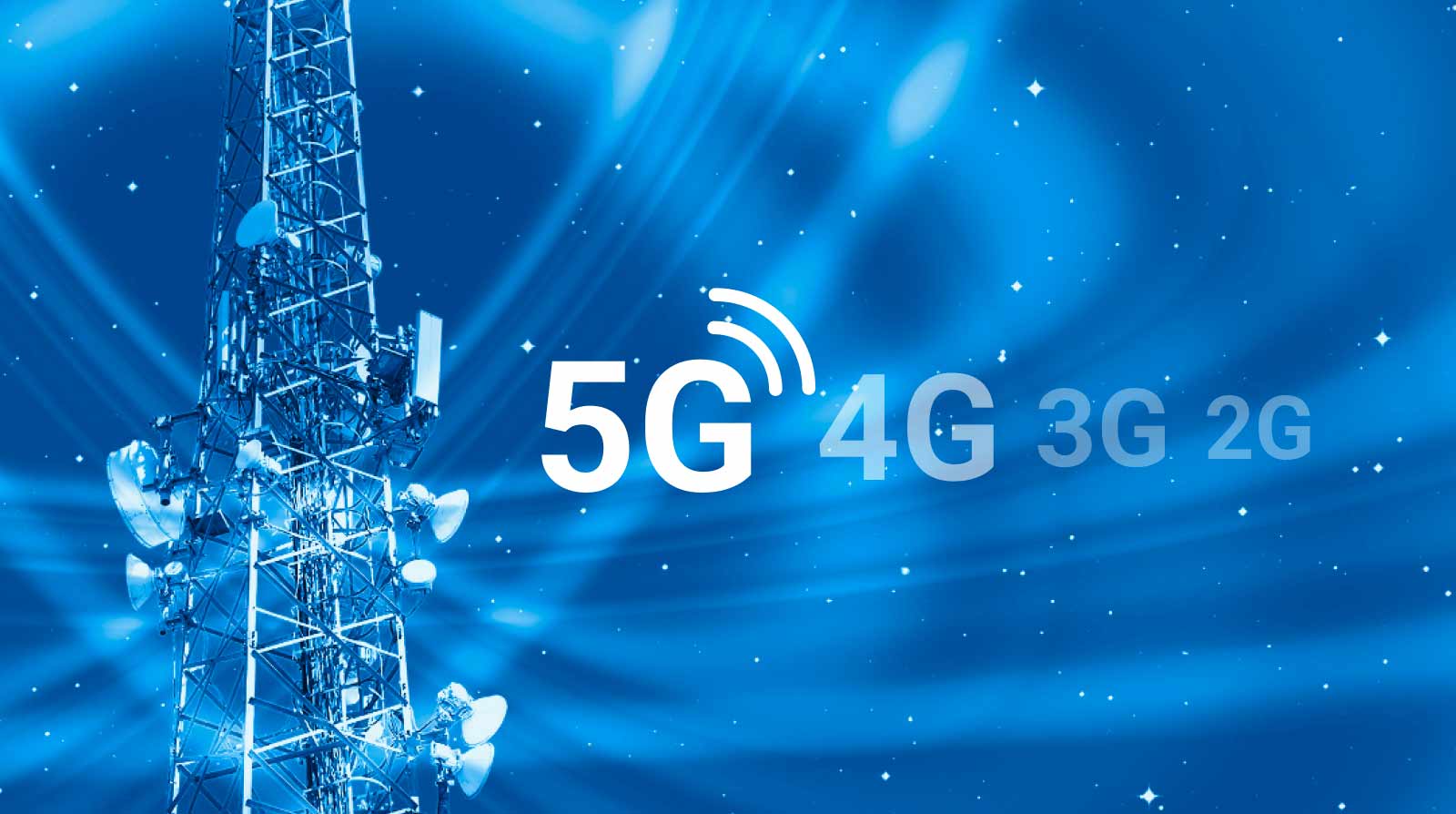Technological advancements drive business growth by enabling more efficient methods for creating, managing, and distributing goods and services. In this article, we explore 5G technology and its transformative impact on daily life. Specifically, we delve into the business benefits of 5G and how it can revolutionize operations for companies in the used device industry.
What Is 5G, and How It Differs from Other Networks
Since their commercial introduction in 1979, cellular networks have evolved significantly through several generations.
At first, these networks were analog systems like 0G (mobile radiotelephones), which relied on centralized operators. Later, they evolved to 1G, the first true cellular technology, which used low-power radio transmitters.
Then, technologies developed further, opening the way to digital communication. The first digital standard, 2G, provided encrypted conversations, SMS, and MMS. With 3G, the data speed increased, enabling mobile internet, video calls, and the emergence of app-based services. The transition to 4G brought broadband-like connectivity, supporting HD video streaming, advanced applications, and the seamless experience expected by modern users.
The fifth generation, developed in 2018 and gained widespread popularity in 2019, is called 5G. To this day, it is the most advanced standard in use. 5G is regulated by IMT-2020 guidelines that include requirements for speed, latency, connection density, and other parameters.

The Main Advantages of 5G
5G builds on the strengths of its predecessors and provides enhanced capacities, unlocking new opportunities for network users. The key benefits of 5G include:
- Higher bandwidth. More devices can connect to the network simultaneously, enhancing user experience in crowded areas. Additionally, it accelerates the adoption of the Internet of Things (IoT) by enabling reliable communication between connected devices.
- Increased download speeds. With 5G, peak data rates can reach up to 10 Gbps, providing faster downloads and quicker connectivity.
- Lower latency. Real-time data exchange becomes more efficient with 5G, reducing latency to as low as 1 millisecond. This improvement supports applications such as near-instantaneous communications, autonomous vehicles, and IoT systems.
- Expanded coverage. 5G enhances connectivity in remote areas by incorporating satellite networks and high-altitude platforms.
Moreover, 5G has created a basis for further development and creation of 6G, its future successor. 6G is expected to be significantly faster than previous generations and provide other advantages, such as near-zero latency and increased streaming speed. For example, Chinese researchers have already set a world record by transmitting 1 terabyte of data over 1 kilometer in just one second, showcasing the potential of 6G technology.
5G Benefits for Businesses
This generation of cellular networks presents numerous benefits for both individuals and businesses. New technology is expected to increase productivity, raise efficiency, and even create new jobs. Additionally, 5G supposedly will boost development of specific industries and services, including the following:
Internet of Things
As 5G enables more devices to connect to the network and facilitates faster data transfer, the adoption of IoT technology is expected to accelerate. This development presents significant opportunities for businesses involved in creating or distributing IoT devices and connected services to evolve with this advanced technology.
Used device businesses can also leverage this growth by integrating IoT solutions to enhance their infrastructure. The increased speed of data exchange is another key advantage, enabling more efficient, data-driven business decisions.
Manufacturing and Inventory Management
In workshops, a 5G connection enhances the efficiency of manufacturing processes. With lower latency and improved overall performance, it opens new opportunities for automation. Businesses can adopt more AI- and technology-driven solutions to streamline production and ensure consistent quality.
Additionally, 5G, combined with IoT technologies, revolutionizes inventory management in warehouses. It enables seamless synchronization between devices, resulting in more efficient logistics, real-time stock tracking, and optimized operations.
Remote Work
Improved connectivity ensures better performance not only at the warehouse or workshop but also in different locations. This way, the remote working process is enhanced, allowing seamless connection without network interruptions or failures.
Customized Networks and Solutions
5G introduces the concept of network slicing, allowing multiple virtual networks to operate on a single physical system. Each slice can be tailored with specific characteristics to meet the unique needs of individual businesses.
This approach offers significant advantages, with infrastructure optimization being a key benefit. It promotes energy efficiency, reduces operational costs, and enhances overall system performance.

How Used Device Businesses Can Benefit from 5G
The above-mentioned benefits can significantly enhance the operations of used device businesses, particularly through applications like robotic testing. Reliable and high-speed connectivity provided by 5G is crucial for ensuring the precision and efficiency required in automated workflows.
One standout example is Reeva, the innovative phone testing robot, which leverages these advancements to streamline processes and eliminate human error. It can be used both in-store for trade-in deals and at warehouses to handle large-volume testing.
Integrate Reeva into your processes to improve stock quality and minimize return rates!








